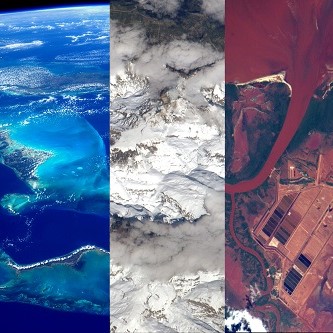US scientists achieve net energy gain for second time in a fusion reaction::The Lawrence Livermore National Laboratory’s National Ignition Facility achieved the feat using lasers to fuse two atoms
Maybe the easiest method is to create the fusion reaction in space because then you don’t need to worry about containment. Have a big ball of fusion going nonstop and then beam that energy to earth.
Then have collectors which receive that beamed down energy. You could put them everywhere… Maybe close to where you need the energy like directly on top of buildings and houses.
And blast the whole planet with radiation? Are you crazy?
Yes, that’s a good complementary energy source.
With it very low efficency and bad predictability, you still need a good stable and predictable baseline energy production.
This is the best summary I could come up with:
US scientists have achieved net energy gain in a nuclear fusion reaction for the second time since a historic breakthrough in December last year in the quest to find a near-limitless, safe and clean source of energy
Scientists at the California-based Lawrence Livermore National Laboratory repeated the breakthrough in an experiment in the National Ignition Facility (NIF) on 30 July that produced a higher energy yield than in December, a Lawrence Livermore spokesperson said.
The approach, which gives rise to the heat and light of the sun and other stars, has been hailed as having huge potential as a sustainable, low-carbon energy source.
In December, Lawrence Livermore first achieved a net energy gain in a fusion experiment using lasers.
The Energy Department called it “a major scientific breakthrough decades in the making that will pave the way for advancements in national defense and the future of clean power.”
Fusion energy raises the prospect of plentiful clean power: the reactions release no greenhouse gases or radioactive waste byproducts.
I’m a bot and I’m open source!
It might be net energy gain when considering just the energy needed to sustain the reaction, but I doubt it accounts for the energy needed to power and cool all of the infrastructure that makes that reaction possible. They never mention that part.
In December, Lawrence Livermore first achieved a net energy gain in a fusion experiment using lasers. That experiment briefly achieved what’s known as fusion ignition by generating 3.15 megajoules of energy output after the laser delivered 2.05 megajoules to the target
The laser energy is not the only energy input (or even the largest part) required to run these experiments.
Here is a good (2 year old) video on this topic: https://www.youtube.com/watch?v=LJ4W1g-6JiY
Here is an alternative Piped link(s): https://piped.video/watch?v=LJ4W1g-6JiY
Piped is a privacy-respecting open-source alternative frontend to YouTube.
I’m open-source, check me out at GitHub.
How ‘Net’ are we talking here?
I remember one video, maybe from Tom Scott or Thunderf00t or Veritasium that explained that the term ‘net energy gain’ in fusion reactors was being used a little too flexibly and when you look at the larger picture it’s actually like -50% gain.
deleted by creator
Here is an alternative Piped link(s): https://piped.video/Dp6W7g9no0w
Piped is a privacy-respecting open-source alternative frontend to YouTube.
I’m open-source, check me out at GitHub.






